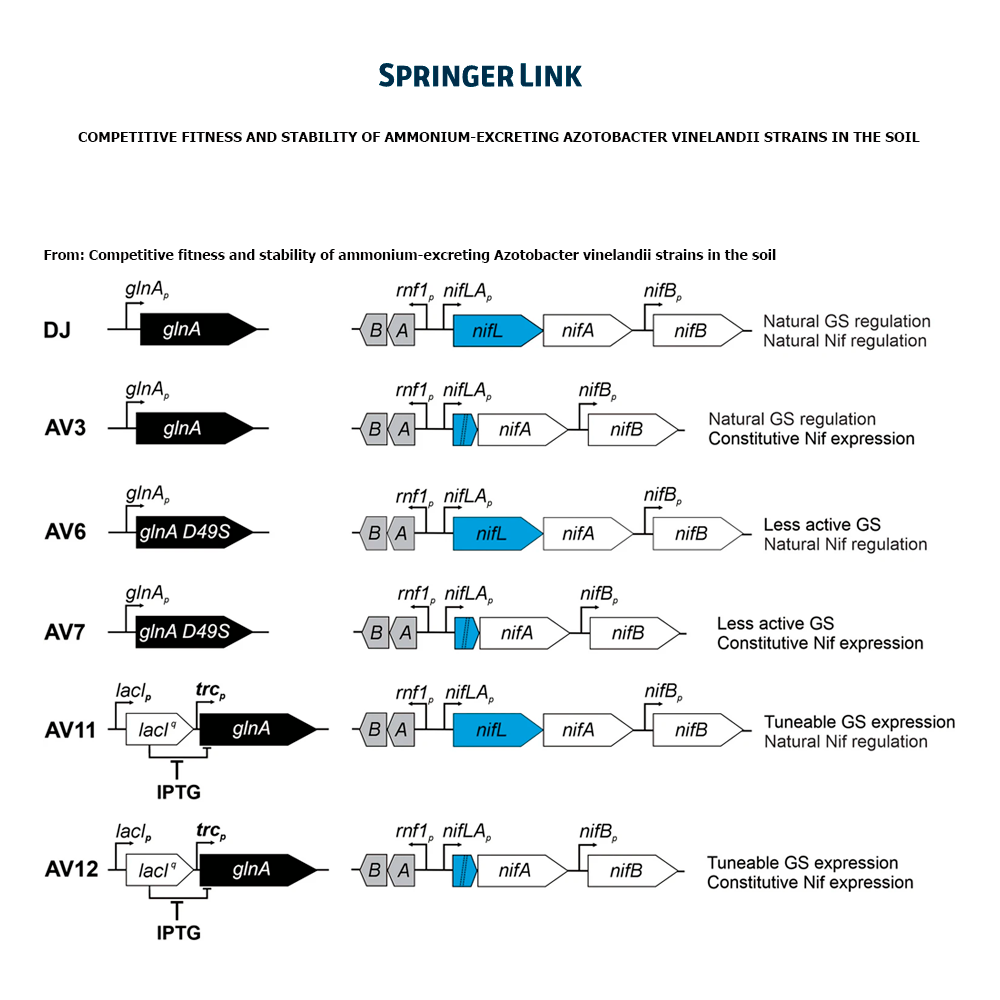Applied Microbiology and Biotechnology, Volume 108, article number 378, 2024
Abstract
Non-symbiotic N2-fixation would greatly increase the versatility of N-biofertilizers for sustainable agriculture. Genetic modification of diazotrophic bacteria has successfully enhanced NH4+ release. In this study, we compared the competitive fitness of A. vinelandii mutant strains, which allowed us to analyze the burden of NH4+ release under a broad dynamic range. Long-term competition assays under regular culture conditions confirmed a large burden for NH4+ release, exclusion by the wt strain, phenotypic instability, and loss of the ability to release NH4+. In contrast, co-inoculation in mild autoclaved soil showed a much longer co-existence with the wt strain and a stable NH4+ release phenotype. All genetically modified strains increased the N content and changed its chemical speciation in the soil. This study contributes one step forward towards bridging a knowledge gap between molecular biology laboratory research and the incorporation of N from the air into the soil in a molecular species suitable for plant nutrition, a crucial requirement for developing improved bacterial inoculants for economic and environmentally sustainable agriculture.
Key points
• Genetic engineering for NH4+ excretion imposes a fitness burden on the culture medium
• Large phenotypic instability for NH4+-excreting bacteria in culture medium
• Lower fitness burden and phenotypic instability for NH4+-excreting bacteria in soil

